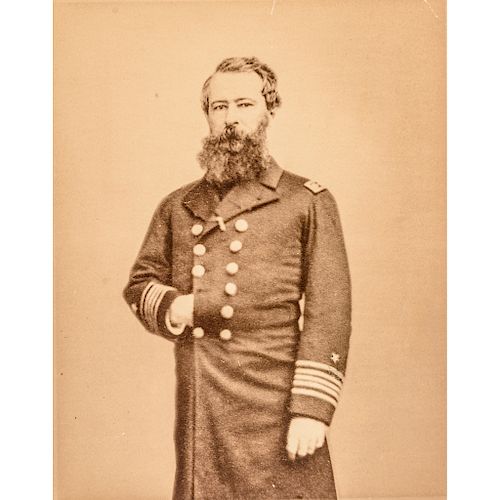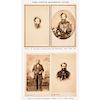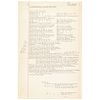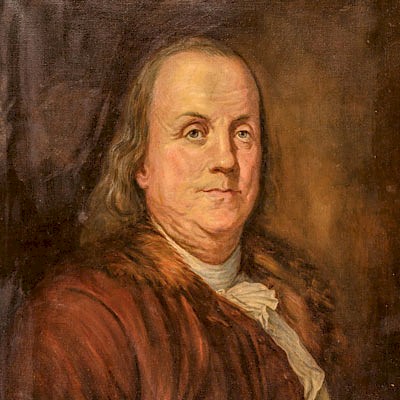Tunis Augustus Macdonough Craven, Extensive Historical Naval Collection Archive
Lot 22
Estimate:
$600 - $800
Absentee vs Live bid
Two ways to bid:
- Leave a max absentee bid and the platform will bid on your behalf up to your maximum bid during the live auction.
- Bid live during the auction and your bids will be submitted real-time to the auctioneer.
Bid Increments
| Price | Bid Increment |
|---|---|
| $0 | $10 |
| $200 | $20 |
| $300 | $25 |
| $500 | $50 |
| $1,000 | $100 |
| $2,000 | $200 |
| $3,000 | $250 |
| $5,000 | $500 |
| $10,000 | $1,000 |
| $20,000 | $2,000 |
| $30,000 | $2,500 |
| $50,000 | $5,000 |
| $100,000 | $10,000 |
| $200,000 | $20,000 |
| $300,000 | $25,000 |
| $500,000 | $50,000 |
About Auction
By Early American History Auctions
Aug 24, 2019
Set Reminder
2019-08-24 12:00:00
2019-08-24 12:00:00
America/New_York
Bidsquare
Bidsquare : Autographs, Colonial Currency, Political Americana, Historic Guns
https://www.bidsquare.com/auctions/early-american-history-auctions/autographs-colonial-currency-political-americana-historic-guns-4347
Historic Autographs • Colonial Currency • American Civil War Colonial Era • Revolutionary War • Political Americana • Black History Early American History Auctions auctions@earlyamerican.com
Historic Autographs • Colonial Currency • American Civil War Colonial Era • Revolutionary War • Political Americana • Black History Early American History Auctions auctions@earlyamerican.com
- Lot Description
Autographs
Extensive Historical Naval Collection Archive Devoted To Civil War Hero Tunis Augustus Macdonough Craven, USN
(TUNIS CRAVEN. - Tunis Augustus Macdonough Craven) (1813-1864). U.S. Naval Hero, Officer in the United States Navy, included service in the Mexican-American War and the American Civil War, killed in action at the Battle of Mobile Bay, August 5, 1864. Three Ships in the Navy have been named "USS Craven" for him.
Extensive and Important Historical Naval Collection Archive, Devoted To Tunis Augustus Macdonough Craven, USN, a.k.a. Tunis Carven, not signed, Approx. 60 items, overall Very Fine. This large Commemorative Collection of related items includes Five different scarce Photograph images of Tunis Craven including one rare 9" x 7" Mammoth size Albumen Photograph on Card taken by O'Neil, New York, shown in full USN Uniform, some prior mounting traces to the outer backing card edges, plus (4) additional Civil War Era Carte de Visite Photograph portraits on a sheet for display, taken in New York and Cadiz, Spain. All are Choice Very Fine. A comprehensive typed "Royal Ancestry of Eckford Craven Dekay" by Lewis D. Cook Philadelphia dated September 1931, records the family lineage back to "The Emperor Charlemagne"; "Alfred The Great, King of England"; and "William the Conqueror" among other Kings and Royalty! Various original newspaper reports and the Printed Card Invitations on the Launching of the 3rd "USS CRAVEN" come together with numerous Original Photographs of the actual Launching Event and depicts many dignitaries who were present. Numerous original Typed and Handwritten Letters to the family from various service members and the ship's builder are included. Also, an extensive assortment of Craven family members and associates accompany this archive in tribute to Tunis Craven, USN. (Over 60 items).
Tunis Augustus Macdonough Craven was born in Portsmouth, N. H., January 11, 1813. He was the youngest son of Tunis Craven, a Naval Storekeeper, stationed at the Portsmouth Yard, and his wife, Hannah Tingey, daughter of Commodore Thomas Tingey, a longtime commandant of the Washington Navy Yard. His brother, Thomas Tingey Craven would also join the navy, rising to the rank of rear admiral, while another brother, Alfred Wingate Craven (1810-1879), became a noted civil engineer.
In his youth he attended the Columbia College Grammar School in New York, his father having removed his family to Brooklyn, when ordered to duty in the New York Yard. February 2, 1829, Craven was appointed an acting midshipman from New York (warranted November 18, 1831), and was attached to the Boston and St. Louis.
Promoted to Passed Midshipman in September 1835, he was on duty in connection with the Coast Survey almost continually until 1843, nearly two years after his promotion to Lieutenant, in September 1841. In 1838 he married Mary Carter, a member of one of the oldest and most influential families on Long Island, who died in 1843, leaving three children. The same year Lieutenant Craven was ordered to the receiving ship at New York, where he remained until ordered to the Dale in May, 1846. In the meantime he had married again and removed from Brooklyn to Bound Brook, New Jersey. His second wife was Marie L. Stevenson, of Baltimore, Maryland, by whom he had three children. Craven served on the Dale during the Mexican-American War with the Pacific Squadron. He was given command of the chartered schooner Libertad in 1847, patrolling the coast of Baja California Sur to intercept Mexican ships trying to bring men and military material to their army in the territory. In the Bombardment of Punta Sombrero, Craven engaged in a gun duel with a shore battery guarding the anchorage of Mulege.
After his return from duty on the Dale he was employed on Coast Survey duty, with the exception of a year (1850) at the Naval Observatory, till 1859. Most of this time he commanded the steamer Corwin, but in October 1857, went in the Varina in command of the Atrato Expedition, which was for the purpose of surveying a route for a proposed ship canal through Isthmus of Darien (now called Panama) by way of the Atrato River.
In 1859 Lieutenant Craven was ordered to the command of the steamer Mohawk, Home Squadron, in which he captured two slavers; in 1860 he saved the crew of the Bella, a foundering Spanish vessel, for which he was given a gold medal and diploma by Queen Isabella II. About the same time the New York Board of Underwriters presented Mrs. Craven with a handsome silver service for efficient services rendered to merchant vessels at sea by her husband.
In 1861 Lieutenant Craven was ordered to command the Crusader, Home Squadron, but was shortly after promoted to Commander and ordered to command the Tuscarora, special service. The Tuscarora went to England with orders to report to the U.S. Minister, Mr. Adams. While in Southampton the Confederate steamer CSS Nashville came in; but upon her leaving, the Tuscarora was unable to follow until the expiration of 24 hours, when, giving up the chase, Commander Craven went to the Mediterranean, where he succeeded in watching the CSS Sumter so closely that her officers and crew finally deserted the ship at Gibraltar.
The Tuscarora was ordered home in 1863, and Commander Craven was detached and ordered to command the Tecumseh, then building at Secor's yard, Jersey City. In the following spring the Tecumseh left New York and joined the squadron of Admiral Lee in the James River.
Shortly after, the Tecumseh was sent to join Admiral Farragut's fleet in the projected attack on Mobile. The position of Commander Craven in the attack, which took place August 5, was at the head of the column of monitors which was on the starboard hand of the wooden vessels between them and Fort Morgan. Admiral Farragut in his reports states:
"The attacking fleet steamed steadily up the main ship channel, the Tecumseh firing the first shot at forty-seven minutes past six o'clock. At six minutes past seven the fort opened on us, and was replied to by a gun from the USS Brooklyn, and immediately after the action became general. It was soon apparent that there was some difficulty ahead.
The Brooklyn, for some cause which I did not then clearly understand, but which has since been explained by Captain Alden in his report, arrested the advance of the whole fleet, while at the same time the guns of the fort were playing with great effect upon that vessel and the Hartford. A moment after I saw the Tecumseh, struck by a torpedo, disappear almost instantaneously beneath the waves, carrying with her her gallant commander and nearly all her crew."
The captain and the pilot were in the conning tower directly over the turret, whence there was no escape save through a narrow opening. Upon reaching this Commander Craven turned to the pilot and said, "You first, sir." The pilot, John Collins, escaped, and, as he related, the vessel sank under him, carrying her crew of one hundred and sixteen in all, save himself and the few that were able to escape through the port holes. A buoy in Mobile Bay marks the spot where the Tecumseh lies.
- Shipping Info
-
Early American provides in-house worldwide shipping. Please contact us directly if you have questions about your specific shipping requirements.
-
- Buyer's Premium



 EUR
EUR CAD
CAD AUD
AUD GBP
GBP MXN
MXN HKD
HKD CNY
CNY MYR
MYR SEK
SEK SGD
SGD CHF
CHF THB
THB













